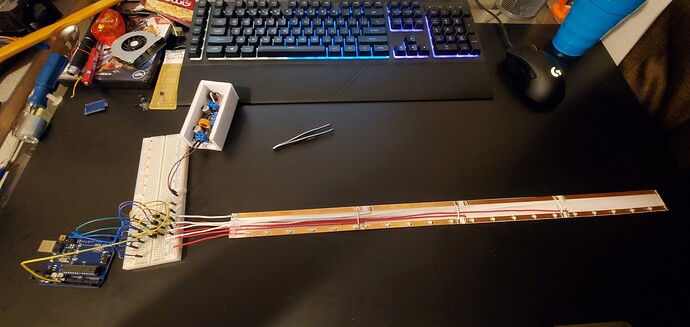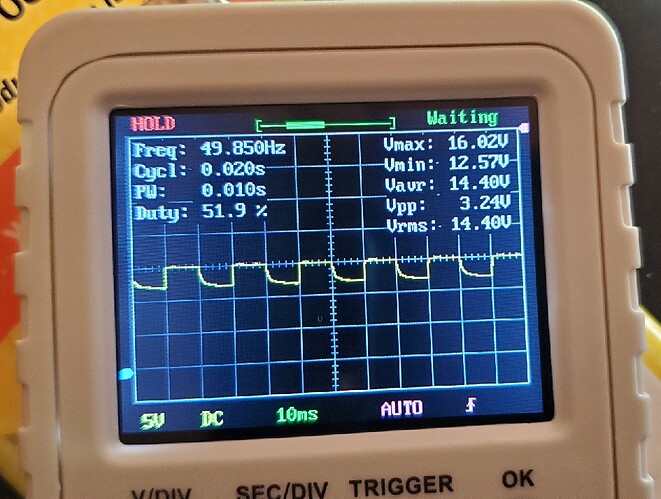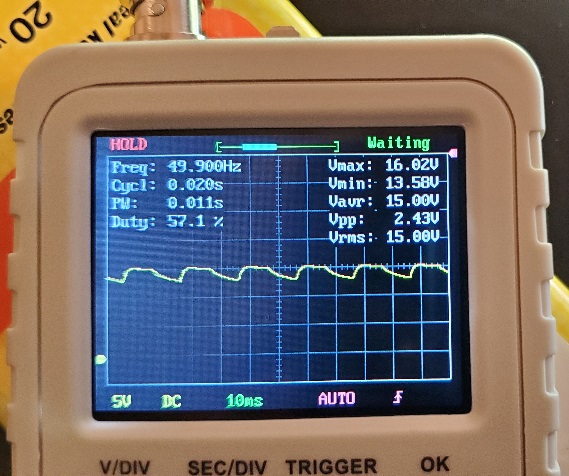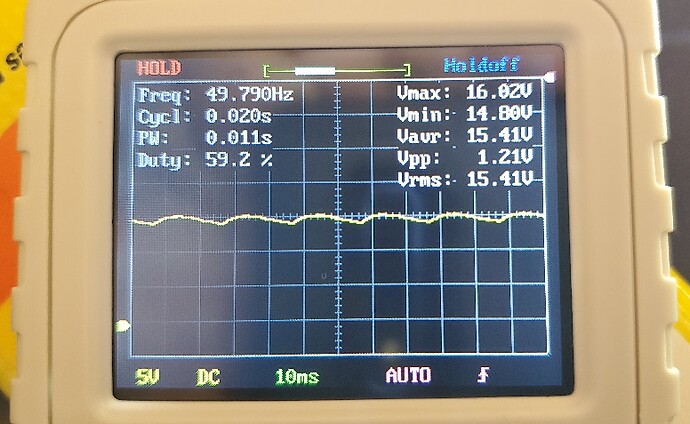Hello community, this is my first time here so i apologize if i do anything incorrectly. Any and all help is greatly appreciated.
Firstly when it comes to Arduino and electronics in general there is still a lot i don't understand but the projects i work on i try my best to learn as much as i can on my own. That being said, i have hit a wall of sorts and don't understand what exactly is happening.
GOAL:
My ultimate goal is to power multiple home made LED strips that will stay lit for a full 24 hours running off of as small a battery that i can use. Eventually it will be used to light up plants i'll be growing indoors. I understand it would be a lot easier to just buy led lamps, plug it in and call it a day but i enjoy solving problems too much to do that ![]()
Parts:
Arduino UNO
2k resistors (x8)
S8050 NPN transistors (x4)
3.3v 20mA SMD 3528 white LED (x20)
DC-DC Step-down Constant Current Regulator Module
What i'm trying to do:
I currently have 20 LED's set up in a strip i made and wired together in groups of five. For the time being i'm using a laptop power supply that puts out 19.5v at 3.6 amps. That is being pushed through the current regulator to put out a steady 16v at 20mA. At 16v and 20mA i can power 5 LED at a time in series but that's not enough to power the eventual 80 LED strips that will be used. The conclusion that i came to in the end was, I didn't need to power them all at the same time. I could keep the output the same but switch from LED group to LED group really fast to the point they all seemed to be on at the same time so only one group of 5 LED is ever powered on at a time. This way i get the most light usage possible from the least amount of power possible(again my goal is to make this all use as little power as possible).
My problem:
MY current set up, if it's not clear from the pictures, has positive power coming from the regulator into all the positive wires at the same time then through the LED strips and back out into a transistors Collector. The Arduino outputs a 5v signal through two 2k resistors(all i have for now) into the transistors base. The Emitter is then connected to ground and the circuit is complete. This set up works great at slow blinking speeds or constant on for a single set at a time. When i start blinking the sets faster to the point they all look to be on solid(a "delay(5);" for my eyes) i notice that all the LED's are dimmer. I don't have a scope just yet, i only just ordered one tonight. The best i can do is use a DMM. Using this when i read the voltage at one of the LED groups i measure around 10v when flashing quickly. I thought at first this was due to the DMM not reading it fast enough because it's switching on/off and settling at that voltage but then realized that wouldn't make sense because then the LED's wouldn't be dim. When fully on i measure 15.8v at a group and obviously those LED's are brighter.
My Thoughts:
I read somewhere that LED's have a certain amount of time they need in order to reach full brightness and that switching them on/off too fast they can't reach full brightness. This makes sense for now until i get my scope and see what voltage is really coming out of the transistor.
Another thought i had was maybe The transistor was having problems because its rated for a max voltage of 20v through Collector-Emitter and i was close to that limit so i substituted those for "2N4401" transistors with a higher max of 40v but got the exact same results.
If with a scope i'm not getting full voltage out of the transistor at this switching speed i assume ill have to do some research into other better transistors?
If i am getting full voltage out of the transistor then to me that means the LED's don't have enough time to fully light up before they are turned off again then before they go out they turn back on and so on so they get stuck in this middle area where they are lit but not fully. Are there LED's specially made with faster on times? If so can someone point me in the right direction that would be most helpful. If i can't get faster "on" LED's then what if i attach a coil in the circuit to help keep the LED's on just long enough for the circuit to come back to it and "top it off" to keep it at full brightness. If i did that then maybe i could elongate the delay between the groups so they have enough time to fully light up and stay on just long enough so i don't notice the blinking.(unless that't not how coils work, i'm just throwing this out there as I've only just last night started research on how coils work and are used in circuits)
***Quick note though. I noticed when i had a delay of 5 in the Arduino coding i would get an average voltage per group of about 9.9v but when i removed the delay all together and it was just straight on/off i got a higher DMM measured reading of 11.6v. If i could switch these on and off even faster using "true coding" or something like that from the little research found online would i measure a higher voltage closer to 15.8v? Would the LED's get brighter then? I'll look into this separately.
For easy visualization i only took a close up picture of a single group wiring but normally it would be times 4
P.S. I realize i could have made this strip differently and saved time and materials but the only time i had to make this was the other night around 1 am so i was tired and wasn't thinking clearly. Next version will have a smaller footprint ![]()
Arduino code used for those that care(it's real basic though)
void setup() {
pinMode(8, OUTPUT);
pinMode(9, OUTPUT);
pinMode(10, OUTPUT);
pinMode(11, OUTPUT);
}
void loop() {
digitalWrite(8, HIGH);
delay(5);
digitalWrite(8, LOW);
digitalWrite(9, HIGH);
delay(5);
digitalWrite(9, LOW);
digitalWrite(10, HIGH);
delay(5);
digitalWrite(10, LOW);
digitalWrite(11, HIGH);
delay(5);
digitalWrite(11, LOW);
}





